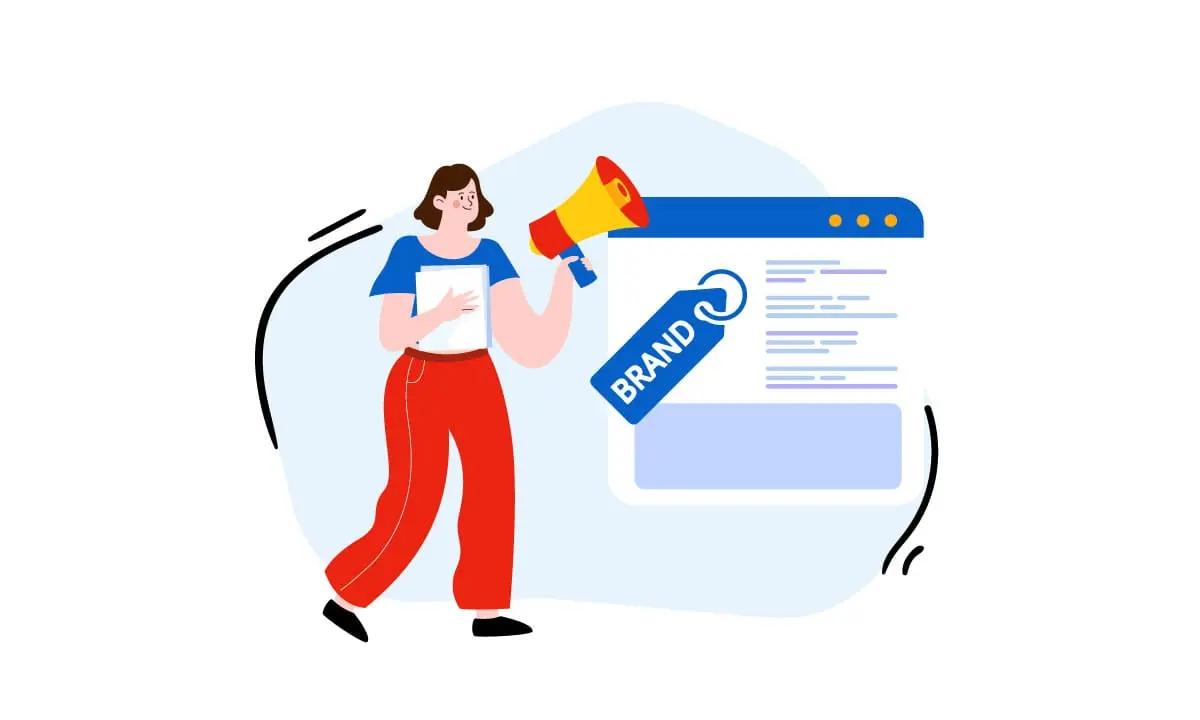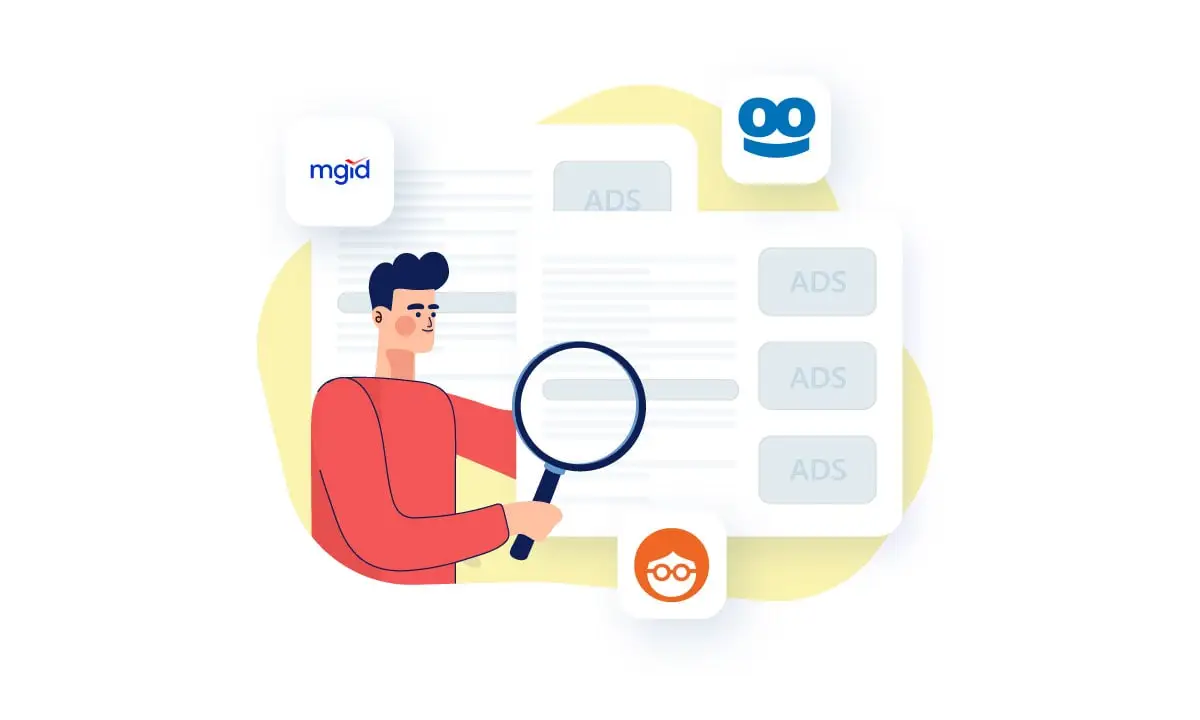As one of the most popular advertising formats, native ads are widely used by businesses worldwide to reach more customers. Due to its highly versatile nature, native advertising could be implemented in various forms of media and platforms and achieve great results. The global native advertising market is projected to reach a staggering $400 billion by 2025. Just to give you an idea about how well native performs compared to other, more traditional advertising formats, consumers look at native ads 52% more than display ads.

Native could have many different forms and shapes, depending on where and how its implemented, which could cause confusion for businesses looking to adopt it in their marketing strategies. For example, many people use content marketing and native advertising interchangeably by mistake. We’re going to have a full content marketing vs native advertising comparison to show you their differences and help you pick the one that best suits your brand.
Native advertising: What is it and why was it created?
Native ads mimic the look and feel of their surrounding organic content. The objective here is to have little impact on the user’s experience. Native ads are designed to match the visual language, function, and tone of the place they’re being served on. As a result, people tend to be kinder to them and don’t dismiss them just as easily as they ignore traditional ads. One of the best native advertising examples is an advertorial, which is an advertisement in print media that appears as an editorial article.

While this type of advertising feels a bit deceitful, it’s actually not that duplicitous because government authorities oblige businesses to tell viewers that they’re seeing ads. That’s why there’s always a small phrase or tag on the native ads’ widgets that indicates they’re Sponsored Content or Paid Promotions. Publications and advertising channels charge brands for running native ads based on CPC or CPM.
What’s ad fatigue?
You see them everywhere, every day, all the time. We’re talking about ads. On the streets. On billboards. On newspapers. Facebook. Instagram. Google. Your favorite news website. The games you play on your phone. Everywhere. It’s no secret that our world is overly saturated by advertisements, many of which are aggressive, dishonest, and downright annoying. That’s people are getting more elusive toward ads every day. It has gone well beyond just ignoring ads. A big chunk of ads people see daily come from the Internet. It’s been a while since people adopted measures like adblockers to actively prevent ads from interrupting their online experience. You can see how this could become problematic for businesses trying to find customers all around the world.

Ad fatigue has a very negative impact on the marketing landscape. It leads to low click-through rates, which is one of the most important performance metrics for advertisers and platforms. In simple terms, people just get so sick of seeing ads wherever they turn their eyes that they grow some sort of automatic ignoring mechanism. Fewer impressions and low engagement with ads is could be a serious headache for both the platforms that make money from people seeing and clicking on the ads they serve and the businesses that order these ads to find customers and keep their business alive (let alone thriving). Luckily, native advertising, content marketing, branded content, and other unobtrusive advertising methods are here to the rescue.
Native advertising has been very successful in preventing ad fatigue. Basically, the whole idea revolves around advertising to an audience without them realizing that they’re seeing an ad. These ads usually try to bring value by addressing a common problem of the target audience and providing the advertiser’s product or service as a solution. Native ads are non-disruptive and feel natural to users. Since they blend in with other organic content, they can’t be easily blocked, and surprisingly, people are way nicer to them than normal ads. Although people know that they’re watching ads, they appreciate their non-disruptive nature and the value they bring. This has resulted in native ads being one of the highest-performing ad types in almost every metric including click-through rate and impressions.
What’s content marketing?
Content marketing is a major marketing strategy that is focused on establishing a well-defined audience by creating and distributing valuable and useful content for them consistently. This long-term strategy builds trust and credibility among consumers and helps shape a dedicated following that keeps coming back to check out your content.
Heavily engaging with the audience and prioritizing their interests is key in content marketing. In other words, instead of directly promoting your brand, your products, or your service, you’ll be serving content that’s relevant to your business, and interesting, informative, or fun in the eyes of your prospects at the same time. This way, you’ll be able to create an improved, trustworthy image of your brand and achieve a multitude of business goals while giving your audience what they want. It’s really a win-win approach.
It’s important to know that content marketing is an inbound strategy that mainly focuses on a brand’s owned media. This means that the brand decides the format, placement, schedule, design, etc. entirely on its own, thus saving the cost of third-party distribution platforms. Content marketing could be the foundation of a brand’s online presence. It’s an effective approach to establishing a close connection with customers across different channels and maintaining a fresh, authentic brand image.
Native advertising vs content marketing
You’ve probably realized the main differences between these two up to this point. Content marketing is a broad marketing approach. It’s entirely focused on a brand’s own media and outlets like its blogs or YouTube channels. Native advertising is an advertising method that takes advantage of a third-party platform’s already-established audience in an unobtrusive way.

Thus, the brand must pay other platforms to serve its native ads with little control over how they look and how they’re implemented. It costs more than content marketing, but you’ll skip the process of building a fanbase for your outbound channels. Some experts believe native advertising is an extension of content marketing. The common practice between professional brands and advertisers is taking advantage of a mixture of both. This way, you’ll benefit from the massive audience of third-party platforms while establishing a closer connection with your customers in your own channels.
Conclusion
Hopefully, this comparison would help you better distinguish native advertising from content marketing and utilize the one that suits your brand and resources better in your marketing strategies. If it’s feasible for you, we strongly recommend you use both of them to build a strong omnichannel presence and drive traffic to your website.
FAQs
What is the difference between content marketing and native marketing?
Content marketing is done on a brand’s self-owned media like a blog, social app page, or YouTube channel. Native ads are served on third-party platforms and brands pay these platforms to show their ads.
Which is common to both content marketing and native advertising?
Not sounding like a promotion is what’s common between content marketing and native advertising. Both of them focus on bringing value to the customers first and low-key promote a brand in an unobtrusive way.
Which type of content is similar to native advertising?
Content marketing, branded content and sponsored content are similar to native advertising, even to the point where many people use them interchangeably by mistake. The reason is all of them have the goal of promoting a brand without sounding salesy, dishonest, and exaggerating.







 Facebook Ads Spy Tool
Facebook Ads Spy Tool TikTok Ads Spy Tool
TikTok Ads Spy Tool